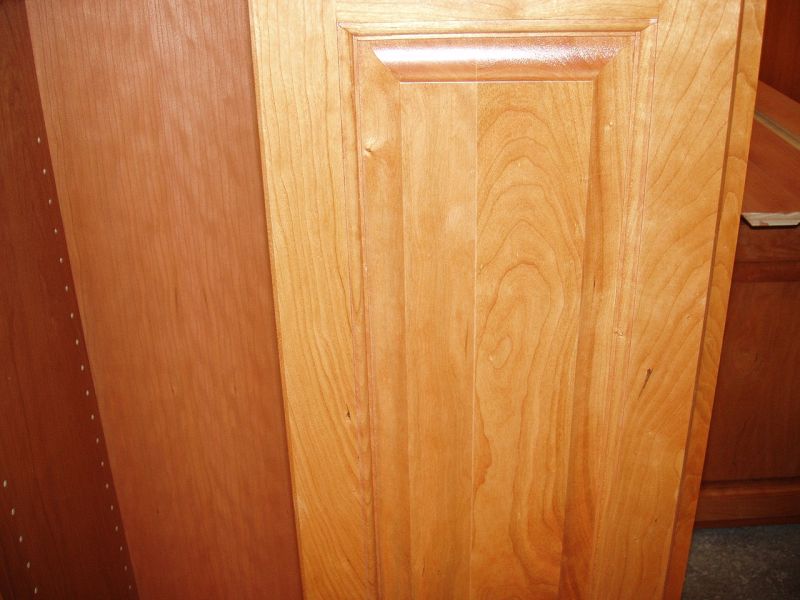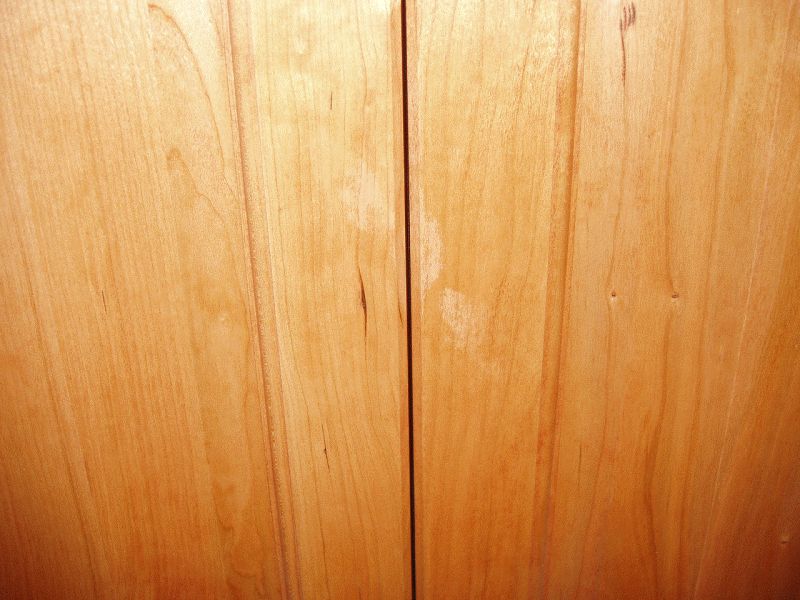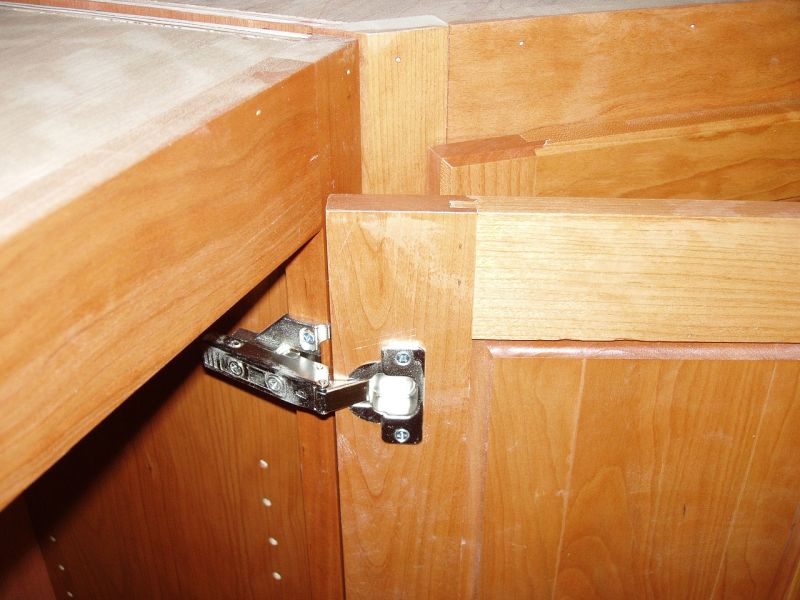Odd Light Spots on Finished Cherry
Is it glue marks? Fingerprints? Bad sanding? Cabinetmakers try to get to the bottom of a peculiar finish defect in stained Cherry. July 28, 2012
Question
I have been making a set of cherry kitchen cabinets, raised panel with Cabot Burnt Cherry stain. After finishing with 3 coats of Chemcraft 2 lacquer, I noticed a few light spots. It kind of looks like I missed with the stain, but I'm pretty sure I didn't. Now I'm noticing it in more areas. I'm stumped. I don't know if it appears more as the wood darkens or what. I would hate to sand and refinish. When I stained, I used nitrile gloves. I usually just use my bare hands. But I'm usually very thorough wiping off stain. Also, I'm noticing glue lines in my raised panels as the wood darkens. Am I doing something I shouldn't?
Forum Responses
(Cabinetmaking Forum)
From contributor M:
Without seeing the problem, I am going to guess the doors were sanded in spots to remove rub marks or scratches and this is where they are light. As for the glue lines, how long were they clamped before you machined them? Is there any way you can darken the doors with a shading lacquer?
From the original questioner:
The light spots appeared later. I did not sand there. The raised panels were left overnight and even longer. I'm an amateur at spraying. I have never sprayed anything but clear lacquer. Here are some pictures of what I'm talking about. Some of that is just dust.

Click here for higher quality, full size image

Click here for higher quality, full size image

Click here for higher quality, full size image
From contributor L:
Certainly do look like fingerprint marks. Looks like fine dust caught under the clear. Have you tried to scuff a door with the worst marks and respray? Did these marks show themselves at all before the third coat?
From the original questioner:
I did scuff and spray. It didn't go away. I tried a hair dryer, figured what the heck. It looked like it blended, but the next morning it looked the same.
From contributor C:
Based on your pictures of the glue lines, you used a light glue like
Titebond 1 or 2. Cherry does darken dramatically and so it is likely the lines will only grow more evident with time. You could experiment with tinting your finish and could also try your hand at using a small artist brush and carefully applying a die or stain over the glue lines.
The light spots look like glue spots to me. You may have had a small amount of glue on your gloves or hands when the doors were handled during the making and it just didn't sand off completely.
If these are for your own use and you can live with the glue lines, I'd suggest you sand out the doors with the spots and refinish them. If they are for a client, I'd suggest showing them to a professional finish shop and having them handle the cover up.
From the original questioner:
Yes, I did use
Titebond 2. I think I will sand and refinish. Just wondering why the light spots showed up later, not right away. Pretty frustrating, that's all. Not confident at tinting the finish, though. I think I could make things even worse.
From contributor L:
I use TB2 for all of my work. I never see glue lines. Especially glue lines that are as apparent as the ones in your picture. Are these door ones that you built? If they are, can you explain the process that you go through to glue up your panels? My glue lines are only apparent because of the grain change of the boards. And I try my best to hide that by gluing boards with similar grains together.
From contributor R:
Did you wash off the glue at the joint with a rag or sponge like Norm did on TV? If so, you forced wet thinned glue into the wood around the seam. It keeps stain from absorbing into the wood at that point. I let the glue get to a cheese hardness state, and cut it off with a chisel. With your technique, you really have to sand hard after glue up. This may also explain the fingerprint marks elsewhere. Diluted glue going everywhere.
From the original questioner:
This is the first time I have had a glue problem like this. No, after glue up I just wipe off excess with a dry rag, then let it sit overnight. I run each piece through my drum sander quite a few times and then RO sand the heck out of it. So I was surprised to see the glue lines so well.
From contributor J:
I use a wet rag always and never had any problems, ever. If his problem was glue, then he would have noticed it when he stained it, not some time later. I think there's something in the wood that's different, some kind of contamination that's having a reaction. Everything else would show up right away when you're staining.
From contributor Y:
Oh man... I call those bad boys anomalies. Seen them on a few cherry jobs. Looks like fingerprints in some places, looks like rag drag marks other places, looks like water spots, makes glue lines stand out. I hate anomalies! I'm not sure what causes them. I started seeing them after changing finishes. I used Old English rubbed on with 0000 steel wool, made them disappear. I'm a cabinetmaker, not a finisher. That's why I have a finish guy now. Best of luck!
From the original questioner:
Thank you. I know it probably looks like I was careless in my finishing, but I am pretty thorough. Maybe I'll try the Old English and steel wool. Couldn't hurt!
From contributor T:
Most are probably right. A bit of glue on your fingers, although since I have put on an extra 20lbs, I must be very careful not to drip sweat from my brow. If I don't realize it when finishing time comes, I'm in for a world of hurt.
From the original questioner:
For what it's worth, for whatever reason, the Cabot stain reacted to the Chemcraft lacquer. I refinished everything with a lacquer stain and Chemcraft lacquer and everything turned out fine. Learned a lesson. Thank you, everyone.


